Use controls above or click here to open this Hometown Heroes podcast in a new window
91-year-old Al Peguero of Merced, CA appears on episode #432 of Hometown Heroes, debuting August 12, 2016. Peguero has lived in Merced for his entire life, except for three unforgettable years in the U.S. Navy during World War II.
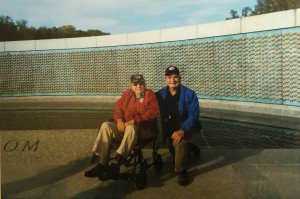
“It was real quiet,” Al says of his hometown in the 1930s. “Everybody was poor and happy.” Listen to the program to find out what Al was doing when he heard about the Japanese attack on Pearl Harbor, and why he decided to quit attending Merced High School shortly thereafter. Soon he was helping to construct buildings near the fairgrounds at what would become the Merced Assembly Center. More than 250 buildings were completed in just eleven days, and soon occupied by Japanese-Americans who had been forced from their Northern California homes in the wake of Executive Order 9066. Most of the nearly 5,000 people held there were eventually sent to the Amache internment camp in Granada, Colorado. A year later, Al ended up in the Navy. “I’d never seen the ocean in my life,” he remembers. When he went to register for naval service, he ran into his cousin, Lino Garcia. The cousins would go through boot camp together in Farragut, ID, and even ended up on the same ship, the light cruiser USS Reno (CL-96).
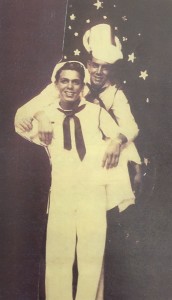
Including Al and Lino, there were nine sailors from Merced among the Reno’s 750-man crew. The two cousins even ended up on the same gun crew, helping to operate a 5″/38 gun on the front of the ship. Listen to Hometown Heroes to hear Al’s memories of his duties aboard the cruiser, including his explanation of just how deafening the giant guns were, how much ear protection he had, and the lingering effects of that gun crew duty.
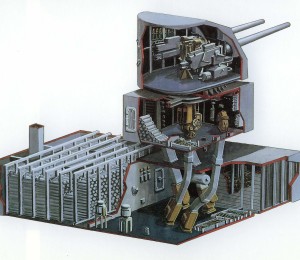
A 541-foot long ship, loaded with firepower, the Reno first saw action off of Marcus Island in May 1944. The next month she shelled Saipan and Iwo Jima before supporting landings at Saipan and Guam in July. Operating around the Philippines in September, the Reno closed in on Formosa (Taiwan) in October. In a three-day stretch, the Reno shot down six enemy planes, but also showed its first signs of vulnerability. “The first time we got hit, we didn’t feel it,” Peguero remembers. “I was at the front part of the ship.” A Japanese torpedo plane had missed with its torpedo, then come back around and crashed into the Reno’s fantail. A gun like the one Al worked on was damaged in the incident, but the ship avoided further destruction. Ten days later, off of Luzon during the Battle of Leyte Gulf, Al and the cruiser’s crew witnessed the bombing of the aircraft carrier USS Princeton (CVL-23).
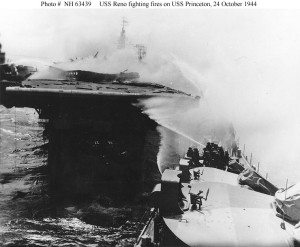
A direct hit from a Japanese divebomber ignited a large fire on the Princeton. A series of explosions followed as the flames encountered gasoline and ammunition. The Reno and other ships were damaged while trying to fight the fires, thanks to rough seas that caused the assisting ships to collide with the carrier. Al was one of many Reno sailors watching from the cruiser’s deck as the crews tried to extinguish the flames. Just as the Reno had pulled away to a safer distance, a giant explosion rocked the Princeton. “It just blew up,” Al explains. After the last few sailors aboard the carrier were evacuated, the USS Irwin was given orders to sink her. That effort nearly proved even more disastrous, as a malfunction caused a torpedo from the Irwin to circle back and nearly hit the Irwin herself. The sinking duty was passed on to the Reno, which fired the fateful torpedo that sank the Princeton, roughly eight hours after the carrier had been bombed. Al Peguero had been witness to tragedy, but little did he know he was about to experience a tragic and horrifying event ten days later. November 3, 1944 is a night Al will never forget.
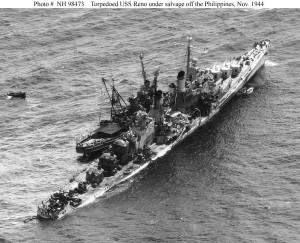
“I was asleep when the ship shook like a fish out of water,” you’ll hear Peguero recall. “It just shook and knocked me on the deck.”
It was 11:30 p.m. and Al quickly got dressed and ran to his battle station. A Japanese submarine had somehow penetrated the convoy and scored a direct torpedo hit to the Reno’s port side. Water was rushing into a gaping hole, and the ship was soon dead in the water. 48 men were killed in the attack, including some who Peguero had gotten to know quite well. He clearly remembers their burial at sea, and he remembers moving, along with his cousin Lino, onto the tug boat USS Zuni. All along the 700-mile, extremely slow journey to Ulithi for repairs, Al’s job aboard the Zuni was to stand by with an axe, ready to sever the rope towing the Reno if the cruiser started to sink. Thankfully, that never happened, and repairs at Ulithi were enough to get the Reno back to the U.S. under her own power. Al had the opportunity to go home and visit his family, which had already learned of the Reno’s close calls.
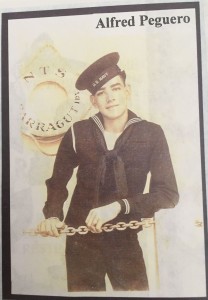
His final missions aboard the ship came as part of Operation Magic Carpet, bringing soldiers home from Europe in time for Christmas, 1945. After his discharge, he returned to his native Merced and began farming with his father while also working construction jobs. The farming operation lives on, managed now by his children.
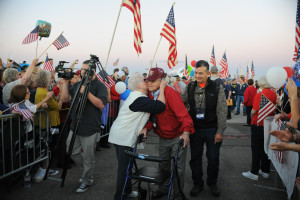
Much of his construction work was at the former Castle Air Force Base in Atwater, CA, where he helped install lights in the concrete runway. Nearly 70 years later, he would make more memories on the runway, taking off and landing there with Central Valley Honor Flight. With son Alfred serving as his guardian, Al visited the National World War II Memorial and other sites, including the Navy Museum, where he reunited with one of the 5-inch/38 caliber guns from the USS Reno. You’ll hear him share about his Honor Flight experience, and also emphasize his pride in having served in World War II. “I’d go again, if it were up to me to go,” the 91-year-old says.
—Paul Loeffler




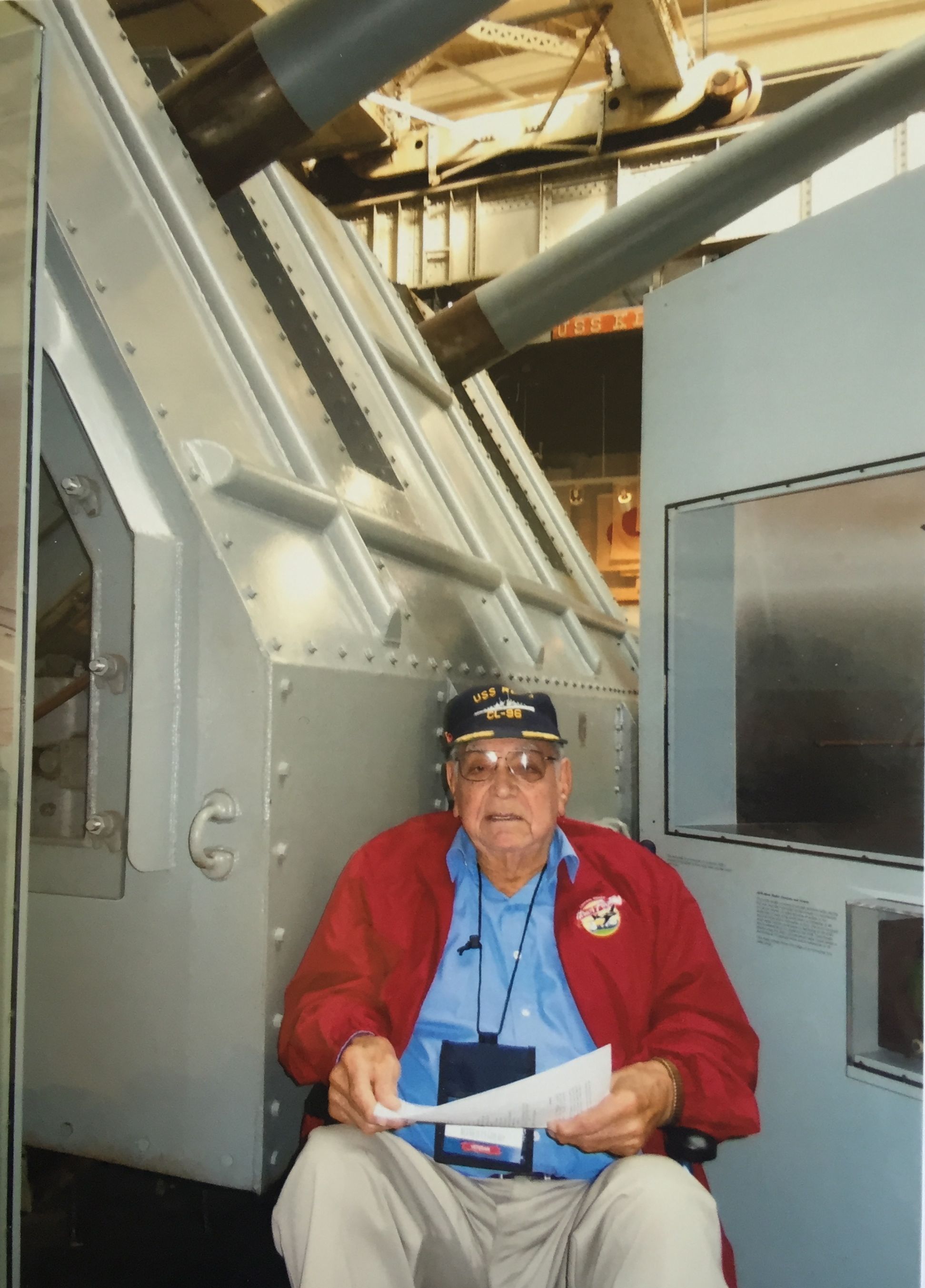
Leave a Reply